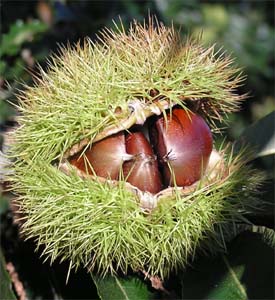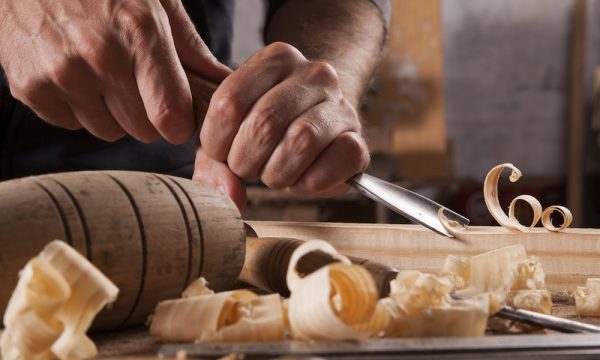One of the things to which I look forward is the spring meeting of the Pennsylvania/New Jersey chapter of
The American Chestnut Tree Foundation. That will be coming up shortly and once more, I'll be reminded that there's always more to learn about the magnificent "Redwoods of the East" that, at one time, dominated our forest, constituting one out of every four trees in Pennsylvania. Think about that. In 1900, if you went into the forest in most of the American Chestnut's range (Georgia to Maine), and counted the trees as you came to them, every fourth one would have been a Chestnut tree. The tree was an undeniable asset to all who needed wood for almost any purpose and the nut crop was desired by human and animal alike.
By 1950, virtually every American Chestnut tree was dead. A blight arriving on American shores on imported Asian Chestnut trees did a quick and thorough job of eliminating what had sustained early settlers and citizens for hundreds of years. The efforts to develop a blight resistant tree with the characteristics of the original American Chestnut is ongoing and is the thrust of The American Chestnut Tree Foundation. The efforts to get a forest that once again is home to these wonderful trees has been supported by a true grass roots movement to reestablish something that was considered so valuable and now unknown by most who are alive today.
Knowing that there was such a thing as The American Chestnut Tree Foundation piqued my fascination. My father and grand father spoke often about the wonderful Chestnut trees and how the lumber from them was used for everything. Some buildings were made with no other wood, Chestnut finding its way into everything from the sill to the roof shingles. My grandfather's theory on the matter was simple. God had provided the Chestnut tree and, as is typical, man was not fully appreciative, So God took it away. To an extent, Granddad was right. Today, through the efforts of so many individuals, we are close to having a blight resistant tree that has most of the characteristics of the trees former generations had come to believe would always be around.
The efforts of the foundation are admirable and deserve support. I encourage you to take a look at work being done and support it. The work of the foundation mirrors the very essence of God's ways. We failed to appreciate what He had provided and, for awhile, the provision was withheld. The promise of those working in the foundation is to not be careless with our stewardship of all that we have been given. A personal piece of the program is an experimental orchard within walking distance to our home planted with hybrid Chestnut trees. I'd be pleased to have you take a look at it.

















